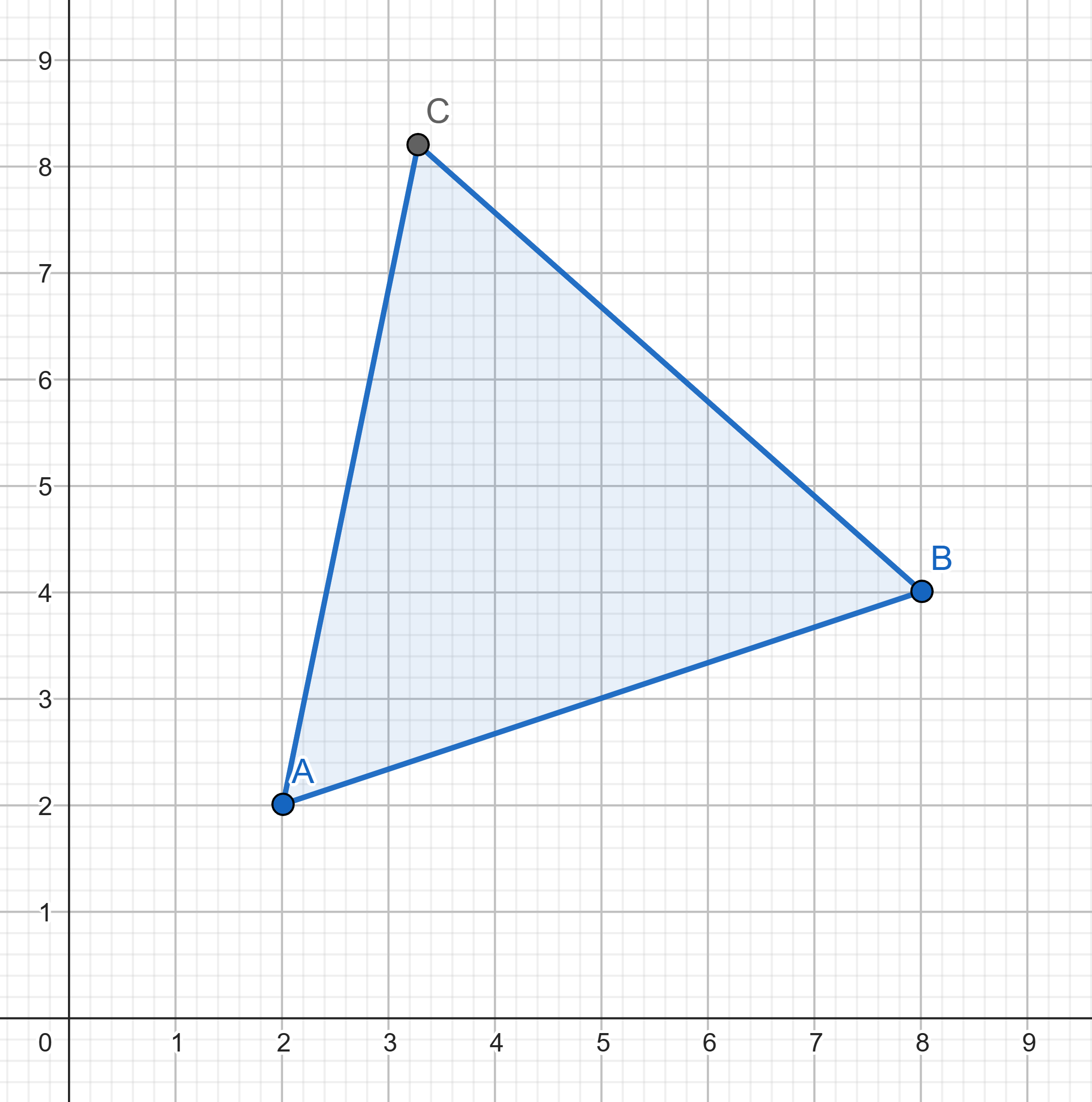Problems
The numbers \(x\) and \(y\) satisfy \(x+3 = y+5\). Prove that \(x>y\).
The numbers \(x\) and \(y\) satisfy \(x+7 \geq y+8\). Prove that \(x>y\).
Can three points with integer coordinates be the vertices of an
equilateral triangle?

Prove that there are infinitely many natural numbers \(\{1,2,3,4,...\}\).
Prove that there are infinitely many prime numbers \(\{2,3,5,7,11,13...\}\).
Is it possible to colour the cells of a \(3\times 3\) board red and yellow such that there are the same number of red cells and yellow cells?
Definition A set is a collection of elements,
containing only one copy of each element. The elements are not ordered,
nor they are governed by any rule. We consider an empty set as a set
too.
There is a set \(C\) consisting of
\(n\) elements. How many sets can be
constructed using the elements of \(C\)?
There are six letters in the alphabet of the Bim-Bam tribe. A word is any sequence of six letters that has at least two identical letters. How many words are there in the language of the Bim-Bam tribe?
A rectangular parallelepiped of the size \(m\times n\times k\) is divided into unit cubes. How many rectangular parallelepipeds are formed in total (including the original one)?
In the Land of Linguists live \(m\) people, who have opportunity to speak \(n\) languages. Each person knows exactly three languages, and the sets of known languages may be different for different people. It is known that \(k\) is the maximum number of people, any two of whom can talk without interpreters. It turned out that \(11n \leq k \leq m/2\). Prove that then there are at least \(mn\) pairs of people in the country who will not be able to talk without interpreters.